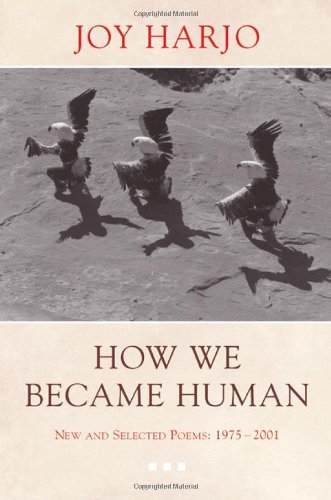JOY HARJO'S POEM, "SOMEONE TALKING" ALONGSIDE A PHOTO OF THE OPEN ROAD IN WYOMING BY BEENISH AHMED.
BY BEENISH AHMED
“National Parks -- spectacular natural treasures that are available to everybody, not just the lucky few -- have been called America's best idea,” President Barack Obama said in an email statement after visiting the Carlsbad Caverns and Yosemite along with his family.
"Rising temperatures could mean no more glaciers at Glacier National Park,” he said from a podium with Yosemite Falls gushing behind him. “No more Joshua trees at Joshua Tree National Park.”
Obama did not, however, make mention of a historic presence long absent from National Parks: Native Americans, many of whom were forcibly removed from their ancestral lands to allow for their conservation as federally managed parks.
Nowhere near the grand spectacle of Old Faithful in Yellowstone National Park, for instance, is mention made of the Native American ceremonies held near it and other geysers. Forcibly removed from their traditional hunting grounds after Yellowstone became the first National Park in 1872, the United States’ government began a campaign to explain their distance by alleging that they were afraid of the park’s geyser activity. Officials corrected the charge nearly a century later, and managers have since allowed tribes native to the area to use the land in some capacity.
Yosemite, which became a part of the NPS in 1865 included a Native community within its boundaries, a remarkable show of regard considering the land grabs and armed conflict used to create Yellowstone, Glacier, and other older National Parks, according to historian Mark Spence.
“[E]very area that later became a national park was once utilized or inhabited by American Indians,” he wrote in a paper called “Dispossessing the Wilderness.”
“Indeed,” he added, “Americans are able to cherish their national parks today only because Indians abandoned them involuntarily or were forcibly removed to reservations.”
Literature put out by the National Parks' Service triumphs conservation while often neglecting to mention indigenous stories, which have been similarly absent in this year's centennial celebrations of them as “America’s best idea.”
Mvskoke Nation member, decorated poet, and celebrated musician Joy Harjo described this sort of historical evisceration in her poem, “Someone Talking,” noting:
[...] they have all those signs:
Kickapoo, Creek, Sac and Fox
dating the beginning and end
of the United States’ recognition
of tribal histories.
It’s as if Native American stories is a closed chapter in the history of this country -- pushed to the margins just as their tribes were, stricken from the record as were their legacies, “saved” from their own identities as were their children. It’s deeply -- and painfully -- ironic that so many of the land from which indigenous people were removed still bears their names: Yosemite, from which Obama commemorated the conservation efforts of the National Parks, happens to be one of them. If only he had noted what was lost amid those efforts to preserve.



